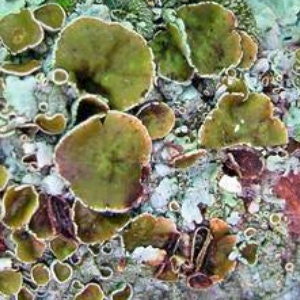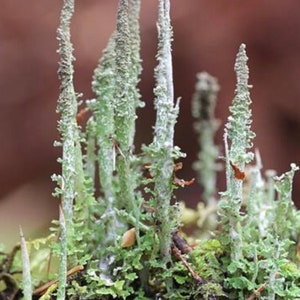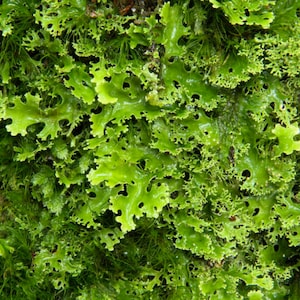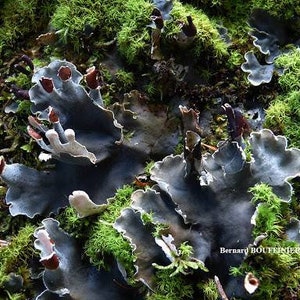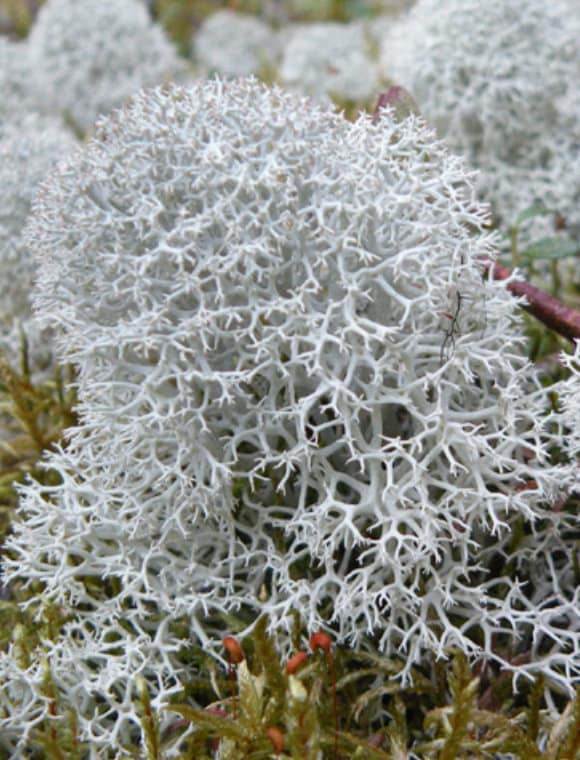
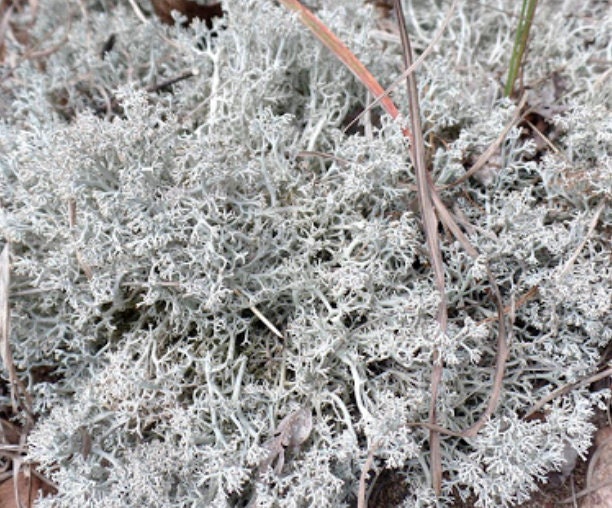
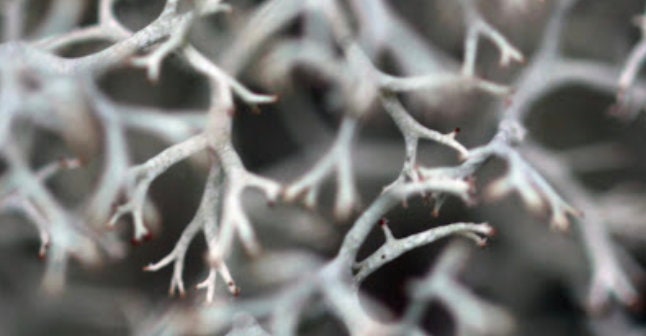
Lichen
living Reindeer lichen with Phytosanitary certification and Passport, grown by moss supplier
$4.52
-
DetailsCladonia rangiferin Is a full light partial light or full shade lichen that grows on forest compost, Sandy soil and clay. This is living lichen that you can grow in your terrarium or outdoors. This lichen can also be stabilized and used for art projects.
we are currently selling this lichen wholesale for large amounts 1M2, 5M2, 10M2!!
Making a bioactive terrarium? We also sell clean-up crews of arthropods (springtails), crustaceans (isopods), and Oniscomorpha (Pill millipedes). These unique living organisms will help establish a healthy relationship between the soil, plant roots and biodegradables inside the enclosure to thrive. If you interested in learning more please message/contact us or go to moss-wholesale.com
Free international tracked shipping from 100 euros of items bought with coupon FREESHIPPING100
Cladonia rangiferina, also known as reindeer lichen, grey reindeer lichen, or reindeer moss, is a light-colored, fruticose species of lichen, belonging to the family Cladoniaceae. It grows in both hot and cold climates in well-drained, open environments.
You will be receiving a piece of living grey reindeer lichen, she has been dried and is just waiting to arrive at your house and for you to plant her and water her :) and she will spring back to life. Planting this lichen in your DIY herbal garden as a herbal remedy and beautiful addition.
As you may know, a lichen is a "dual organism," a mutualistic association between a fungus (the mycobiont) and an alga or cyanobacterium (the photobiont). Usually neither can survive on its own. Note that I've used the term "mutualism" here, although this association is often referred to as a symbiosis. Symbiosis is a less specific term that just means "living together," and in modern usage, it can refer to either a parasitic or mutualistic relationship. In a parasitic relationship, one organism benefits, and one is harmed. In mutualism, both organisms benefit.
About Reindeer Moss
About the Plant
Cladonia rangiferina is also known as Reindeer Moss, Caribou Moss, and Reindeer Lichen. These names and their highly branched growth pattern known as fruticose are often misleading in their appearance to moss. Its most common name is Reindeer Lichen this is because it is a vital source of food eaten by reindeer. It is a lightly colored plant that has a 3-dimensional branching with a bushy appearance, it belongs to the Cladoniaceae family.
Cladonia Rangiferina generic name comes from the Greek word ‘Kladon’ meaning sprout, because of its shrub-like appearance with its branching segments of the lichen. The species name comes from the reindeer and caribou genus ‘Rangifer’.
Source and Description
Reindeer lichen is a slow-growing plant that is only reported to grow by 3-5mm per year. Due to destruction by overgrazing, burning, or being trampled on it is leaving us with the consequence that it may take decades for this plant to return to those areas.
As we are aware Reindeer Lichen is extremely branched, each dividing into between three and four thicker branches. The colours vary from whitish, greyish or a brownish-grey. It forms extensive mats up to 10cm tall, with the branching at a smaller angle.
It has no sufficient protective layer but a loose layer of hyphae that covers the photobionts (Trebouxia irregularis a form of green algae). Lichen has two separate organisms fungus and algae, because of this successful combination the fungus provides moisture and minerals, where the photobiont algae provide photosynthetic nutrition. Lichen can survive for long periods of time without water. They dry out and go dormant when there is little water or light. They can begin to grow again even after very long periods of dormancy.
Habitat
Being a hard plant it can grow in a variety of habitats from hot and cold climates that are well-drained, open environments. It can particularly dominate the ground in many pine forests and low alpine sites, in addition to the rocky ground and in humid areas. Reindeer lichen is referred to as any several species that are consumed by the reindeer in Eurasia and Caribou of North America it constitutes about 90% of their diet during the winter months and 50% in the summer.
Medicinal uses
In the 15th century, the Doctrine of Signatures stated that ‘a planet could treat a disease it almost looked like’ this created the phytotherapeutics in traditional medicines such as traditional Indian medicine, Chinese medicine, and Western herbal medicine. The term lichen comes from the Greek word ‘leprous’ referring to the use of lichens treating skin disease, due to their peeling skin appearance. It has been used in the treatment of pulmonary and cranial diseases.
During the Middle Ages, lichens figured prominently as the herbs used by practitioners. Northern native people used it t treat colds, arthritis, fevers, and other problems. It was also used as a poultice to relieve the aches of arthritic joints. In addition, it could also help with constipation, convulsions, tuberculosis, and a useful remedy for whooping cough.
The medicinal use of lichens in the 18th century where it was first used as a drug, is claimed to be good for coughs, jaundice, rabies, and restoring hair loss. In Spanish folk, medicine lichens were used to treat a variety of medical ailments.
Smith an Artic Pharmagcognoisa states that reindeer moss tea was used for chest pains for native hunters who were climbing hills in order for them to maintain their wind.
History
In the 1800’s Sweden led the world in lichen alcohol production where the rest of Europe and Russia followed. It was seen as an alternative to grain alcohol. Lichen brandy was very popular and was also used in the making of Akvavit, a traditional caraway-flavored spirit. Russia also made a molasses (black treacle); this was made from lichen highlights. Most lichens contain 94% carbohydrates, but due to their growth on rocks and stones, results in a rock dissolving acid that can burn your insides, however, Reindeer moss is the most nutritious and least acidic.
Lichen is soaked in several changes of water to make it edible. A modern version of this is to soak them with hardwood ashes. China has their alternative way to make Lichen edible, which was to boil them for thirty minutes, they then soaked them for two days in several changes of water. They are prepared in a variety of ways to be eaten and can be left plain or mixed with other foods, they are dried and added to flour to thicken soups, in addition to being used to thicken desserts. It is often cooked until it forms a gelatinous state.
In Scandinavia, it has been used in the manufacture of alcohol and is commercially grown to make a powder for the thickening of food. Lichen is very rich in vitamins A and B.
Indigenous people of the Arctic known as Dene would eat reindeer lichen by killing the reindeer and harvesting its stomach after the animal had consumed reindeer moss. They would remove the animal's stomach and make sure it was full of reindeer moss, then add the animal's blood. The mixture is allowed to ferment for a few days before they cook and eat it.
Reindeer moss was used to kill wolves by early settlers. They would stuff a dead chicken with reindeer lichen, causing the wolf to consume the chicken and inadvertently digest the reindeer moss. Once within the wolf's digestive tract the reindeer moss would be broken down and form usnic acid crystals, found in lichen. The crystals would cut up the wolf's digestive tract and kill the animal.
Mythology
According to Menomini legend, lichens are said to be the scabs from the head of Ma’napus. He placed the scabs where they were to keep his uncles and aunts from starving. In addition, another version of this legend was that the lichens were the scabs from Ma’napus buttocks where he burned it, and as he slid down a slanting rock they came off.
The Okanagan-Colville legend is about how Bryoria fremontii was created from Coyote’s hair. The legend involves a coyote trying to catch some swans that end up sweeping him into the sky, flying away with him. They let him go when he was high up in the air, as he fell he became caught on the branches of the
trees. Once he was able to free himself from the leaves, much of his hair was entangled in the branches. The coyote transformed this hair into Bryoria fremontii, and said ‘you, my hair, will not be wasted. The coming people will gather you and make you into food.’ -
Shipping & Policies
Shipping from France
Processing time
1-3 business days
Customs and import taxes
Buyers are responsible for any customs and import taxes that may apply. I'm not responsible for delays due to customs.
Payment Options
Returns & Exchanges
I gladly accept returns, exchanges, and cancellations
Just contact me within: 14 days of delivery
Ship items back to me within: 30 days of delivery
- Custom or personalized orders
- Perishable products (like food or flowers)
- Digital downloads
- Intimate items (for health/hygiene reasons)
- Items on sale
Conditions of return
Buyers are responsible for return shipping costs. If the item is not returned in its original condition, the buyer is responsible for any loss in value.
Questions about your order?
Please contact me if you have any problems with your order.
